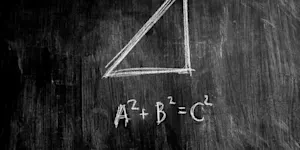What Makes This Word Tick
"Obelus" is the rare gem of punctuation marks—the unsung hero that steps in when division calls. A lovely line with two dots, it's like a cute little division sign smiling back at you. Once a star in mathematical circles, it's grown more obscure, resting comfortably in the pages of old textbooks.
If Obelus Were a Person…
Obelus would be that charming math teacher you had in school, the one with a penchant for wearing bow ties and making numbers dance across the board. A little old-fashioned but endlessly curious, Obelus has a knack for simplifying life's larger puzzles into manageable, bite-sized pieces.
How This Word Has Changed Over Time
Our dear Obelus has quite the history! Originally, it was used in manuscripts to mark passages of dubious authenticity. From there, it journeyed into the realm of arithmetic, becoming the division symbol we recognize today. Think of it as the life's little divider — it helps sort things out.
Old Sayings and Proverbs That Use Obelus
While not typically starring in proverbs, you'd imagine a phrase like "Divided as an obelus," would fit right in. This saying could capture life's fractions—balancing the give-and-take of relationships, perhaps.
Surprising Facts About Obelus
Did you know that initially, the obelus wasn't born for math at all? In ancient texts, it was used to signify variant readings. Essentially, it was a proofreader’s mark turned math icon—talk about a career change!
Out and About With This Word
In modern times, you're most likely to encounter the obelus in math class or on certain calculators displaying classic style. It's a throwback to simpler times in the digital age, like seeing an old friend who hasn't changed a bit.
Pop Culture Moments Where Obelus Was Used
While direct pop culture moments involving the obelus may be sparse, it’s a nostalgic nod whenever you see older movies or TV shows featuring classroom maths before the digital wave took over. It's like a freeze frame in cinematic time.
The Word in Literature
Obelus isn't the main character in literary works, but picture it popping up in the margins of ancient tomes to dispute a thought or idea. It adds a sprinkle of historical intrigue to any scholarly text.
Moments in History with Obelus
Obelus played a starring role in the era of Renaissance humanism when scholars revisited and annotated ancient manuscripts. At that time, obeluses were instrumental in critiquing and discussing texts.
This Word Around the World
The obelus crosses borders with ease! In parts of Europe, especially in Germany and Denmark, it's still prominent as a division symbol in arithmetic, outshining the slash or dot colon dichotomy.
Where Does It Come From?
Stemming from the Greek word for "roasting spit" or "sharp," obelus was initially a tool for scribes, a part of the family that brought us obelisks and obols—an intriguing lineage to the unassuming division marker.
How People Misuse This Word
Obelus is sometimes mistaken for a dagger (†), which is another text-based symbol but with different applications, especially in editing or academic settings.
Words It’s Often Confused With
Dagger (†): Though similar in appearance, the dagger is used for footnotes and annotations, not division.
Slash (/): A commonly used division symbol in informal contexts but graphically distinct.
Colon (:): Another math operator that can signal division, especially in ratios but not to be confused with the obelus.
Additional Synonyms and Antonyms
Synonyms might include "division sign," while antonyms would be tricky as it represents mathematical operation rather than a full-circle concept.
Want to Try It Out in a Sentence?
“Back when we had chalkboards, we used the obelus to neatly divide numbers, and like a trusted old friend, it always got results with a smile.”
















